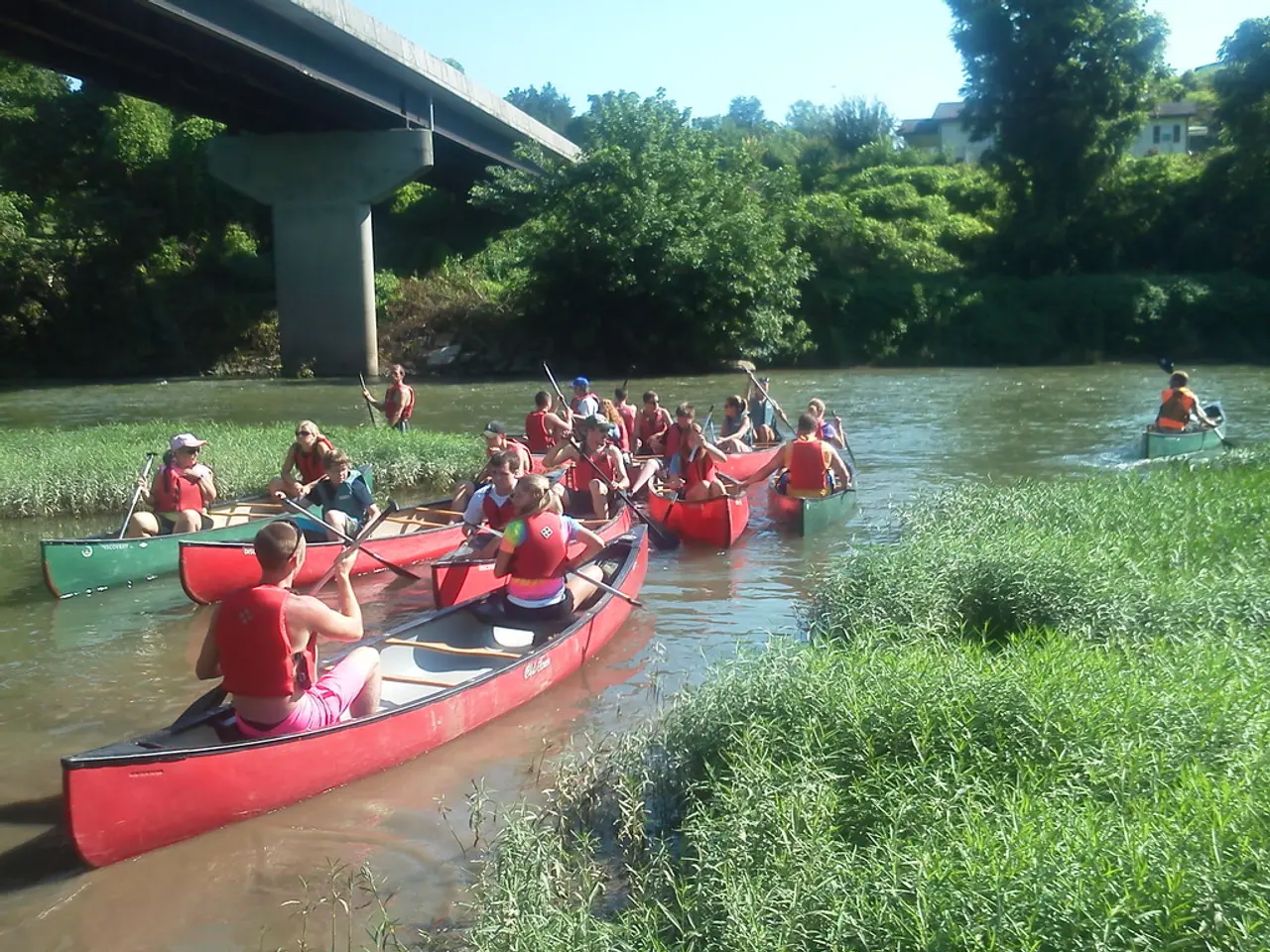Europe's metropolis, Paris, submerges into the Seine: river swimming becomes a popular trend in city centers
In Europe, the practice of swimming in urban waters presents a fascinating mix of regulations, traditions, and challenges. From the bustling canals of Amsterdam to the historic rivers of Paris, each city has its own unique approach to managing public access to its waterways.
In Amsterdam, swimming in the IJ, located behind the central station, is a popular and tolerated activity, with water quality regularly checked. The city's first official swimming spot has recently opened in the historic inner harbour near the shipping museum, offering a safe and regulated option for those wanting to take a dip. However, swimming in the city's canals in the tourist centre is not recommended due to boat traffic.
Across the continent, urban water swimming is regulated mainly through compliance with the European Union’s Bathing Water Directive. This legislation sets legal standards for water quality to safeguard public health. According to the European Environment Agency (EEA), 96% of EU bathing sites meet at least the minimum EU standards. Where water quality is poor, measures such as banning bathing, warning the public, and corrective actions are mandated.
Cities like Paris have made significant strides in improving water quality, with the Seine reopening for swimming after a significant pollution reduction effort tied to the 2024 Olympics. In contrast, swimming in the Tiber in Rome is banned due to poor water quality and neglect.
Berlin, too, has seen protests for the legalization of swimming in the Spree, but the Berlin Senate Administration has concerns about safety and hygiene. London faces challenges due to factors like outdated wastewater systems and pollution spikes after heavy rains, making public access to swimming in urban waters often conditional on ongoing improvements in water treatment and monitoring systems.
In Switzerland, swimming in lakes like Lake Zurich, the Limmat, Lake Geneva, the Rhone, the Rhine in Basel, and the Aare in Bern is a cherished tradition. The Aare River, in particular, is popular for letting oneself drift along with the current on rubber tires.
In Mostar, the jumps from the Stari Most bridge into the Neretva River are a tourist attraction, but are only for trained individuals. The Stari Most, a UNESCO World Heritage site, connects the Muslim and Christian parts of the city.
Elsewhere in Europe, swimming in many parts of the Thames in London and the Tagus River in Lisbon is prohibited due to pollution, while open-air pools are being set up in the Seine near the Eiffel Tower in Paris, allowing swimming for the first time in over 100 years.
In Hungary, swimming in the Danube is limited due to it being an international waterway for freight and tourist ships. However, there are more than 20 permitted swimming areas in the Hungarian part of the Danube. The Hungarian amateur and professional long-distance swimming championship will take place on July 12 in Szentendre.
Spain, on the other hand, has banned swimming in most rivers that flow through major cities due to high water pollution. Swimming in the Arlazón River in Burgos is permitted, however.
In summary, urban water swimming across European cities beyond Paris is regulated through EU-wide water quality standards and local implementation of monitoring, public information, and restrictions as needed, enabling safe swimming in designated urban sites when criteria are met. Each city's unique waterway presents its own set of challenges and opportunities, reflecting the diversity and dynamism of Europe's urban landscapes.
- In addition to swimming in the urban waters of Amsterdam, one can also find a regulated and safe option in the historic inner harbour of the city, recently opened near the shipping museum.
- The lifestyle of swimming in lakes, such as Lake Zurich, the Limmat, and the Aare in Bern, is cherished in Switzerland, with the Aare River being particularly popular for drifting along the current on rubber tires.
- Traveling to Mostar, tourists can witness the jumps from the Stari Most bridge into the Neretva River, an attraction for trained individuals, connecting the Muslim and Christian parts of the city.
- General news in sports has covered the Hungarian amateur and professional long-distance swimming championship, scheduled to take place on July 12 in Szentendre, which will be held in the Hungarian part of the Danube, despite it being an international waterway for freight and tourist ships.




